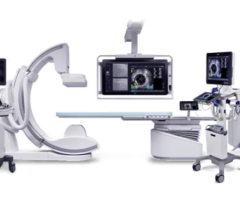
December 29, 2015 — Heart attack patients who had previously undergone coronary artery bypass graft surgery were less likely than other heart attack patients, including those with prior angioplasty, to be treated within the 90-minute recommended “door-to-balloon time,” according to a study published today in the JACC: Cardiovascular Interventions. Door-to-balloon time refers to the time from a patient’s arrival at the hospital to treatment to restore blood flow to the heart with angioplasty and a stent.
Using data from the National Cardiovascular Data Registry CathPCI Registry linked with the ACTION Registry-GWTG, researchers examined records of 15,628 heart attack patients treated at 297 U.S. hospitals between June 2009 and September 2011. Of that group, 6 percent had a history of previous coronary artery bypass graft surgery, 19 percent had previous angioplasty, and 75 percent had no prior history of procedures.
Heart attack patients with prior revascularization through surgery were older, with an average age of 66, than those with prior angioplasty, average age 60, or without any previous interventions, average age 59; and they were more likely to have other medical conditions, including high blood pressure, high cholesterol, and diabetes.
Results showed that 76 percent of patients with prior revascularization via open-heart surgery were treated within the recommended 90-minute door-to-balloon time compared to 88.5 percent of patients with prior angioplasty and 88 percent of patients with no previous interventions. Door-to-balloon time was achieved in 90 percent of patients with a prior history of angioplasty with a stent when the new lesion was located in the previous stent and in 87.3 percent of patients if the lesion was in a non-stented area. For patients with a prior history of bypass graft surgery, 75.9 percent had their angioplasty done within 90 minutes when the new lesion was in the graft site, as did 77 percent when the lesion was located in a new vessel.
Overall, 88.3 percent of patients in the prior surgery group had successful procedures compared with 93.4 percent of patients who had a prior angioplasty and 94.4 percent of patients with no prior interventions. After adjusting for clinical and procedural differences, the study found no significant differences in in-hospital mortality, major adverse events, and major bleeding among the three groups.
Luis Gruberg, M.D., FACC, the study’s lead author and professor of medicine at Stony Brook University in New York said patients with a history of prior coronary artery bypass surgery have more complex anatomy and more co-morbidities, and therefore have a more prolonged door-to-balloon time compared to the other groups in the study. “Nonetheless, every effort should be made to improve timeliness in patients with a history of previous coronary artery bypass surgery,” Gruberg said.
In an accompanying editorial, John S. Douglas Jr., M.D., professor of medicine at the Emory University School of Medicine in Atlanta, said the delay in door-to-balloon time for prior bypass graft patients has important implications for salvaging the heart muscle. According to Douglas, because door-to-catheterization lab and catheterization lab-to-balloon times were not provided, it’s not clear where the delay occurred. “Increased awareness of ‘time is muscle,’” Douglas said, “may lead to shortened door-to-cath lab times and timely performance” for the more difficult patients.
Douglas said the study “should be interpreted as a ‘call to action’ with the goal of earliest possible treatment in all heart attack patients, including those who have had prior coronary artery bypass graft surgery.”
For more information: www.acc.org


 December 20, 2023
December 20, 2023 








